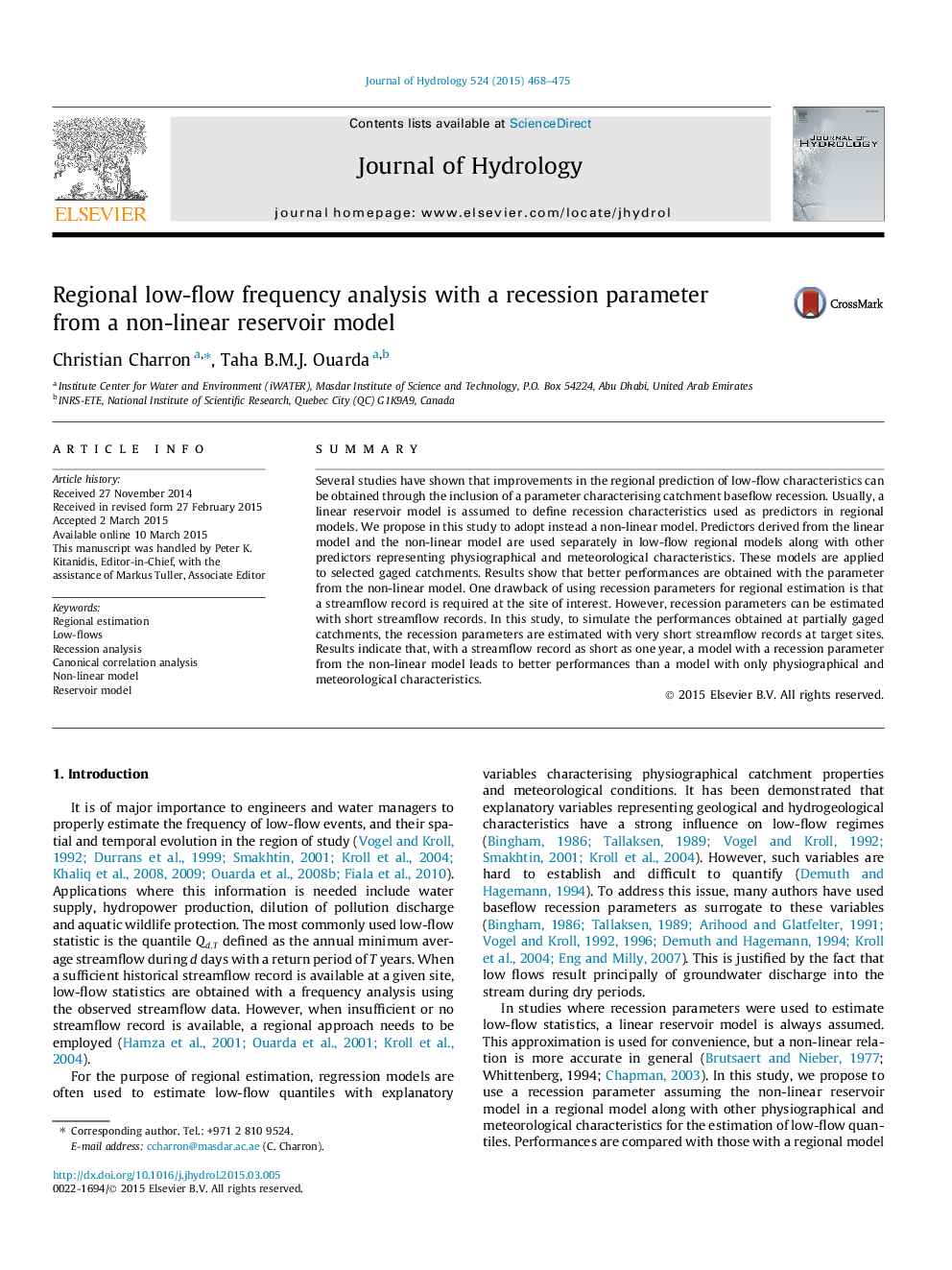| Article ID | Journal | Published Year | Pages | File Type |
|---|---|---|---|---|
| 6411450 | Journal of Hydrology | 2015 | 8 Pages |
â¢Recession parameters are used in a regional model to estimate low-flow quantiles.â¢The non-linear reservoir model is considered as well as the classical linear model.â¢Performances with the non-linear model are superior.â¢The performances of the regional model at partially gaged catchments are evaluated.
SummarySeveral studies have shown that improvements in the regional prediction of low-flow characteristics can be obtained through the inclusion of a parameter characterising catchment baseflow recession. Usually, a linear reservoir model is assumed to define recession characteristics used as predictors in regional models. We propose in this study to adopt instead a non-linear model. Predictors derived from the linear model and the non-linear model are used separately in low-flow regional models along with other predictors representing physiographical and meteorological characteristics. These models are applied to selected gaged catchments. Results show that better performances are obtained with the parameter from the non-linear model. One drawback of using recession parameters for regional estimation is that a streamflow record is required at the site of interest. However, recession parameters can be estimated with short streamflow records. In this study, to simulate the performances obtained at partially gaged catchments, the recession parameters are estimated with very short streamflow records at target sites. Results indicate that, with a streamflow record as short as one year, a model with a recession parameter from the non-linear model leads to better performances than a model with only physiographical and meteorological characteristics.
